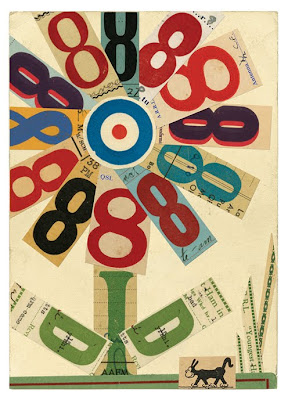


Julia Trigg's large digital collages of gorgeous typographic ephemera are packed full of giant numbers, letters and graphic elements in bold, bright colours. Her new exhibition at Castor + Pollux showcases pieces created from her collection of 1920's - 1950's ham radio cards:
"These amateur hams could have been the first 'techno geeks', making contact with each other through radio, long before telephone was accessible.
They sent each other signals using a type of morse code called Quebec Sign Language and developed their own shorthand - a kind of early text language. They would send each other these letterpress printed 'QSL' cards via post to confirm receipt of the signals - eventually all over the world."
The exhibition previews on Friday and will be open to the public from 18 September to 17 October 2010.
Images copyright Julia Trigg.


No comments:
Post a Comment